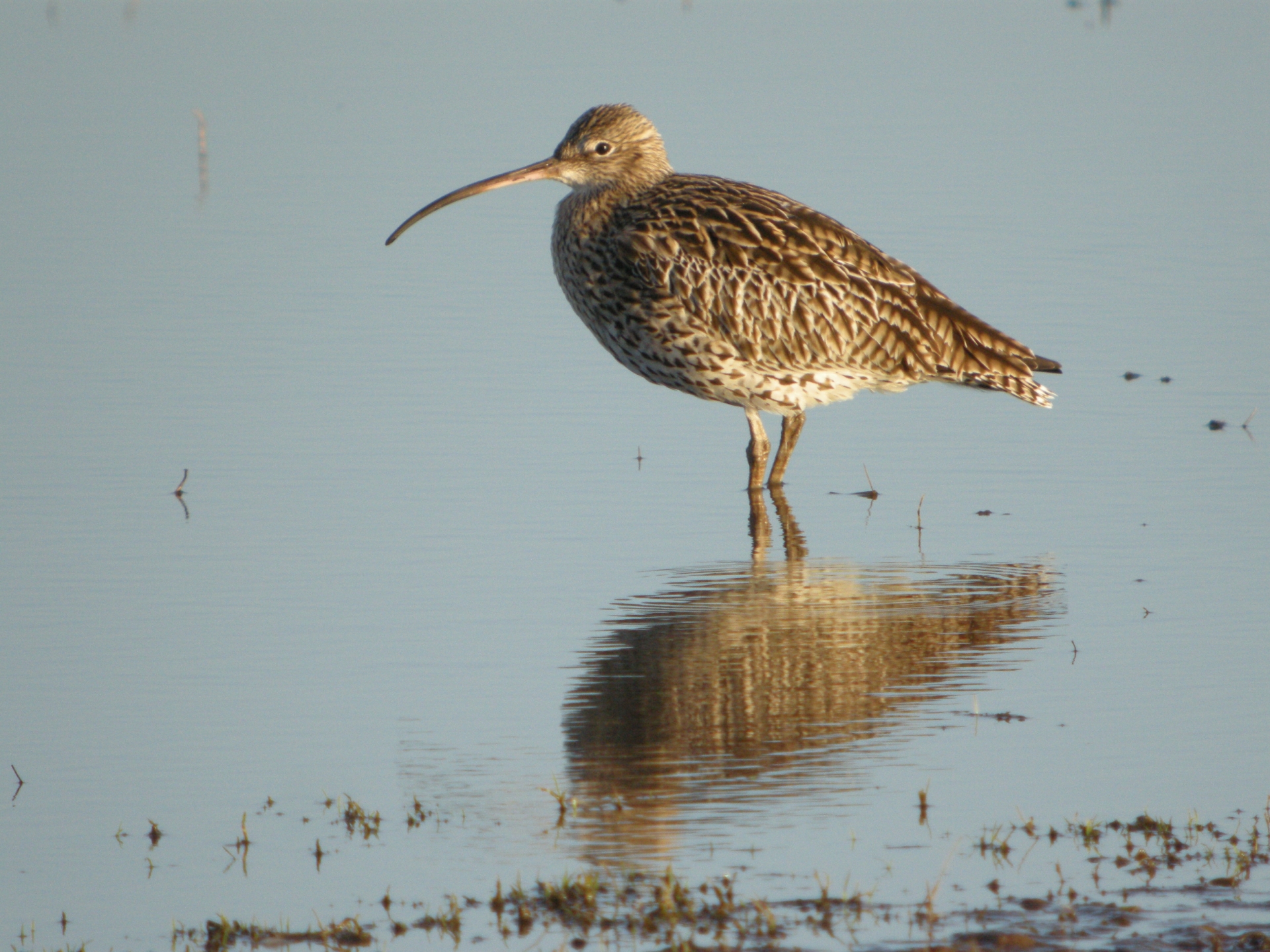
Curlew captured in flight. Image: WWT
New research has shown young Curlews released on Dartmoor in the summer have been tracked 1,300 miles away in the Algarve enjoying a bit of winter sun!
Since 2021, the Duchy of Cornwall has been working in conjunction with WWT, the charity for wetlands and wildlife, as part of a five-year Dartmoor Curlew Recovery Project, which includes the reintroduction of the increasingly rare birds to the moor.
The evocative call of Curlew was once a common sound across Dartmoor and wider Devon but since 1985 their numbers have plummeted by over 85 per cent due to large-scale landscape changes and thriving predators such as foxes.
By 2005, there were only one or two breeding pairs left on Dartmoor and this population remains static now and unable to sustain itself. The ground-nesting birds are the largest wading bird in the UK and are easily identifiable by their striking long legs.
With the 2024 nesting season now over, and well-known summer migrants such as Swallows and Cuckoos having left for their wintering grounds in Africa, the Dartmoor Curlew Recovery Project has been tracking the dispersal and migration of young Curlews reared and released on Dartmoor in August.
Duchy of Cornwall’s Curlew Recovery Project Officer, Jon Avon says: “We are delighted with the successful rearing and release of 25 young curlews by WWT’s aviculturist team. In late August, four weeks after their release, two Curlews fitted with satellite trackers left Dartmoor.
"The technology has provided fascinating information on where the released birds chose to feed, insight into their habitat preference, habitat conditions, management and the wider biodiversity.
"As in the previous years, several individuals travelled around the South West estuaries in Devon, Cornwall and the Isles of Scilly.However this year some undertook an epic journey south, following the warmer weather. By September three of the birds were located in northern Spain while two others made it all the way to the Algarve, in Portugal and southern Spain. Two wild pairs also returned to Dartmoor, but their nesting attempts were unsuccessful this year.”
Eric Heath, Senior Project Manager for Species Recovery at WWT says: “We’re delighted to be working with the Duchy of Cornwall on this Curlew headstarting programme, which has already seen the successful release of 107 curlew onto Dartmoor.
"Using eggs collected under license from RAF Airbases in the East of England, our aviculture teams artificially incubated and reared the birds, then released them into carefully selected sites on the moors.
"Alongside this programme, we’re also working with project partners on wetland habitat restoration, to make sure conditions are ideal for the birds to thrive and eventually return to breed.
"It’s wonderful to learn that some of our ‘headstarted curlew’ have been spotted soaking up the winter sun in Spain and Portugal, using the rich coastal wetlands in Iberia as a point of connectivity to the wider European curlew population. It’s still early days for this project, but we’re hopeful that Dartmoor’s curlew will once again flourish and will help to lead the way to a brighter future for curlew across the UK.”

Above: Curlew in water. Image: WWT
The monitoring work undertaken by the Duchy of Cornwall and the WWT team is complemented by the actions of farmers across Dartmoor who provide habitat for them. Areas of shorter vegetation and shallow pools called scrapes have been created and maintained across the moor. The farmers, Duchy of Cornwall staff on Dartmoor and WWT will be keeping an eye out for the distinctive yellow leg flags of birds if and when they return to Dartmoor next spring.
The project was made possible by His Majesty The King (former Prince of Wales & Duke of Cornwall)’s passion to save the curlew population in Dartmoor. Following discussions with the Duchy of Cornwall and WWT in 2018, the King Charles III Charitable Foundation provided funding towards the five-year programme.
Nikki Jeffery, Executive Director of King Charles III Charitable Fund said “It has been remarkable to follow the journey of curlews raised and reintroduced through this project. We hope that the committed efforts from the Duchy of Cornwall, WWT and other partners involved in the project will be rewarded with the return of a successful breeding population in Dartmoor in the years to come.”
The project is funded by the King Charles III Charitable Foundation via WWT, the Duchy of Cornwall, and is also supported by Dartmoor National Park Authority, Natural England and the RSPB.
Subscribe or register today to discover more from DonegalLive.ie
Buy the e-paper of the Donegal Democrat, Donegal People's Press, Donegal Post and Inish Times here for instant access to Donegal's premier news titles.
Keep up with the latest news from Donegal with our daily newsletter featuring the most important stories of the day delivered to your inbox every evening at 5pm.